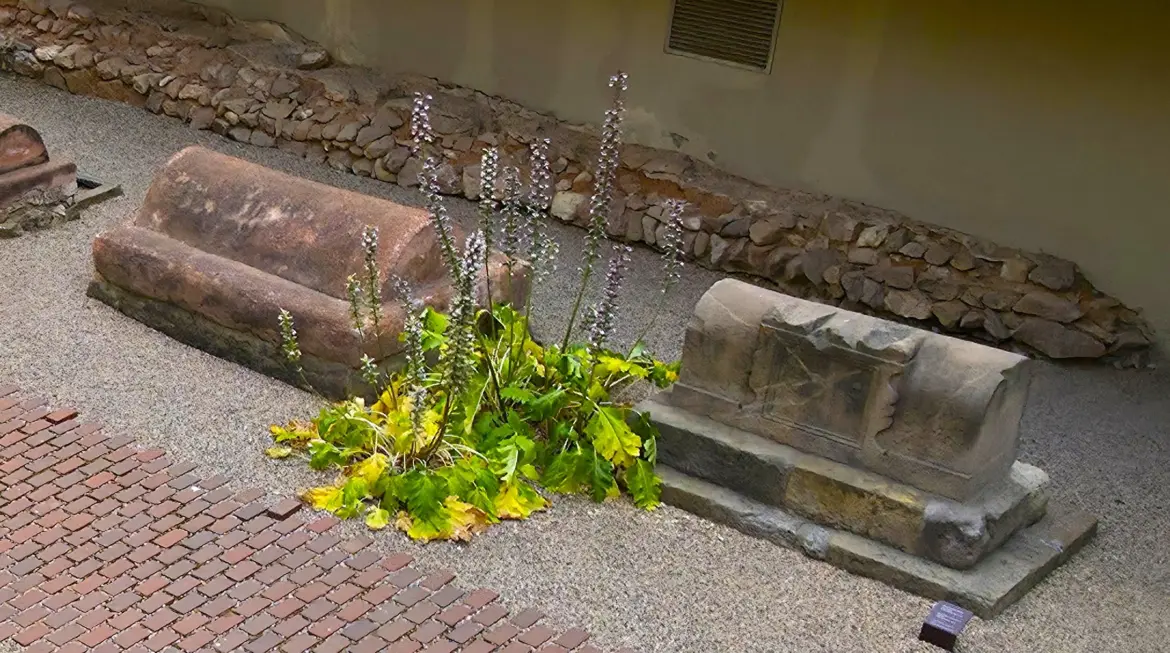Hola, dear readers! Barcelona is a city full of surprises. You can spend the morning admiring Gothic cathedrals, the afternoon exploring Gaudí’s modernist marvels, and then, almost by accident, stumble into a place that carries you back nearly two thousand years. That’s exactly how I felt when I found myself in Plaça de la Vila de Madrid, standing before the Via Sepulcral Romana, Barcelona’s hidden Roman necropolis.
It’s not flashy or grand like the Sagrada Família or La Rambla, but it’s quietly profound. Right in the middle of a lively square, surrounded by cafés, shops, and the hum of city life, lies a place where ordinary Romans once laid their loved ones to rest.
The Roman Necropolis
The Via Sepulcral Romana dates back to the 1st to 3rd centuries AD, when Barcelona was still the Roman colony of Barcino. At that time, Roman law required the dead to be buried outside the city walls, along the main roads leading in and out. This site, once bordering the colony, became one such burial ground.
Here you’ll find more than 70 tombs, simple yet evocative. Unlike the grand mausoleums of emperors or nobles, these were the resting places of everyday citizens – craftspeople, merchants, and families who helped build the life of Barcino. Many of the tombs are humble stone slabs, urns, or sarcophagi, reminders of the Roman tradition of honoring both cremation and inhumation.
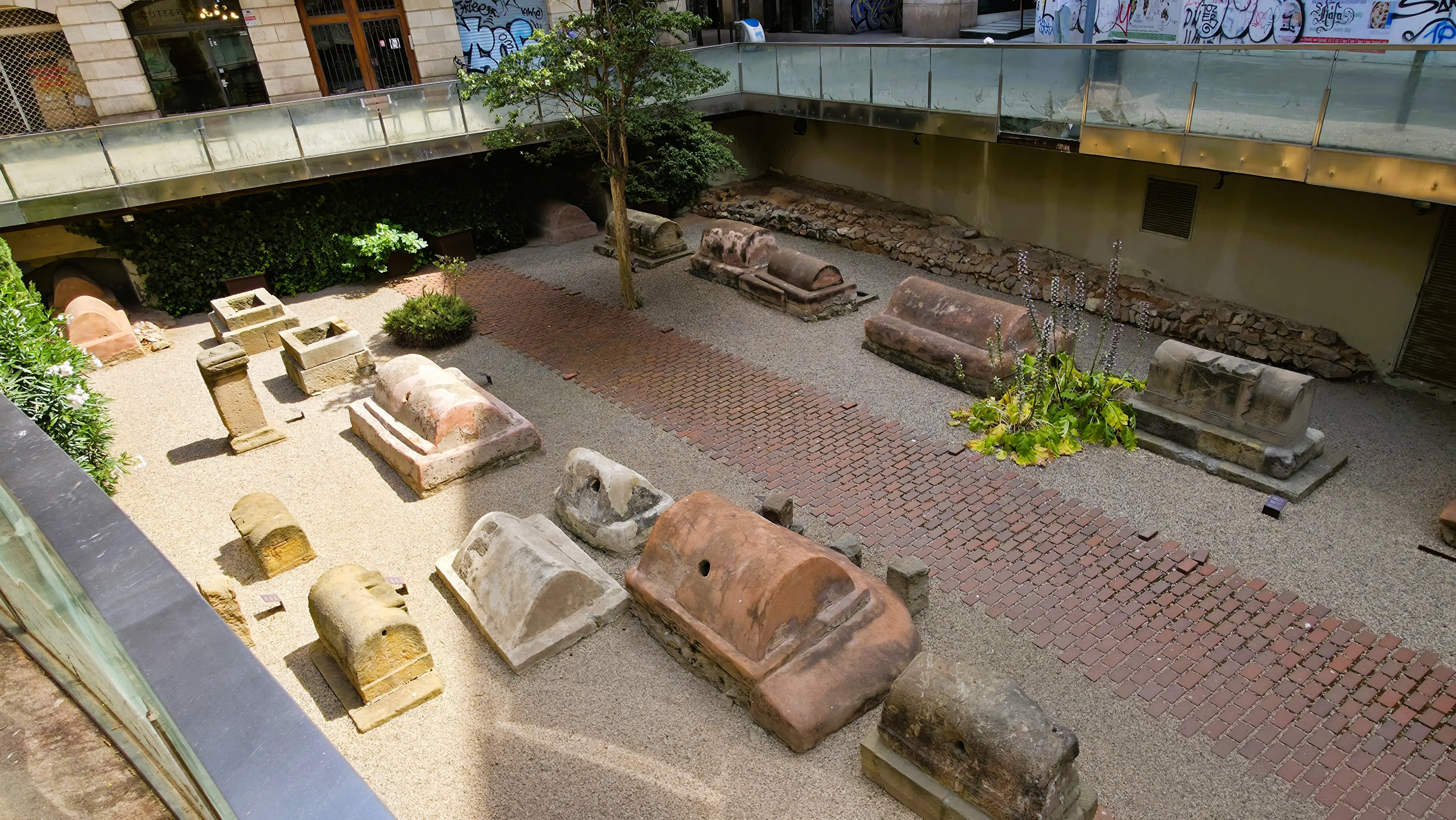
Rediscovery and Preservation
For centuries, the necropolis lay hidden beneath layers of Barcelona’s growth. It wasn’t until the 20th century that excavations uncovered this quiet piece of history. Archaeologists carefully restored the site, leaving the tombs visible in their original layout. Today, walking along the pathways above, you can look directly down into the preserved graves, a rare window into the city’s ancient past. It’s remarkable to think that while the world above changed – medieval walls rose, Gothic churches soared, modern boulevards expanded – these Roman tombs remained silently in place, a time capsule waiting to be rediscovered.
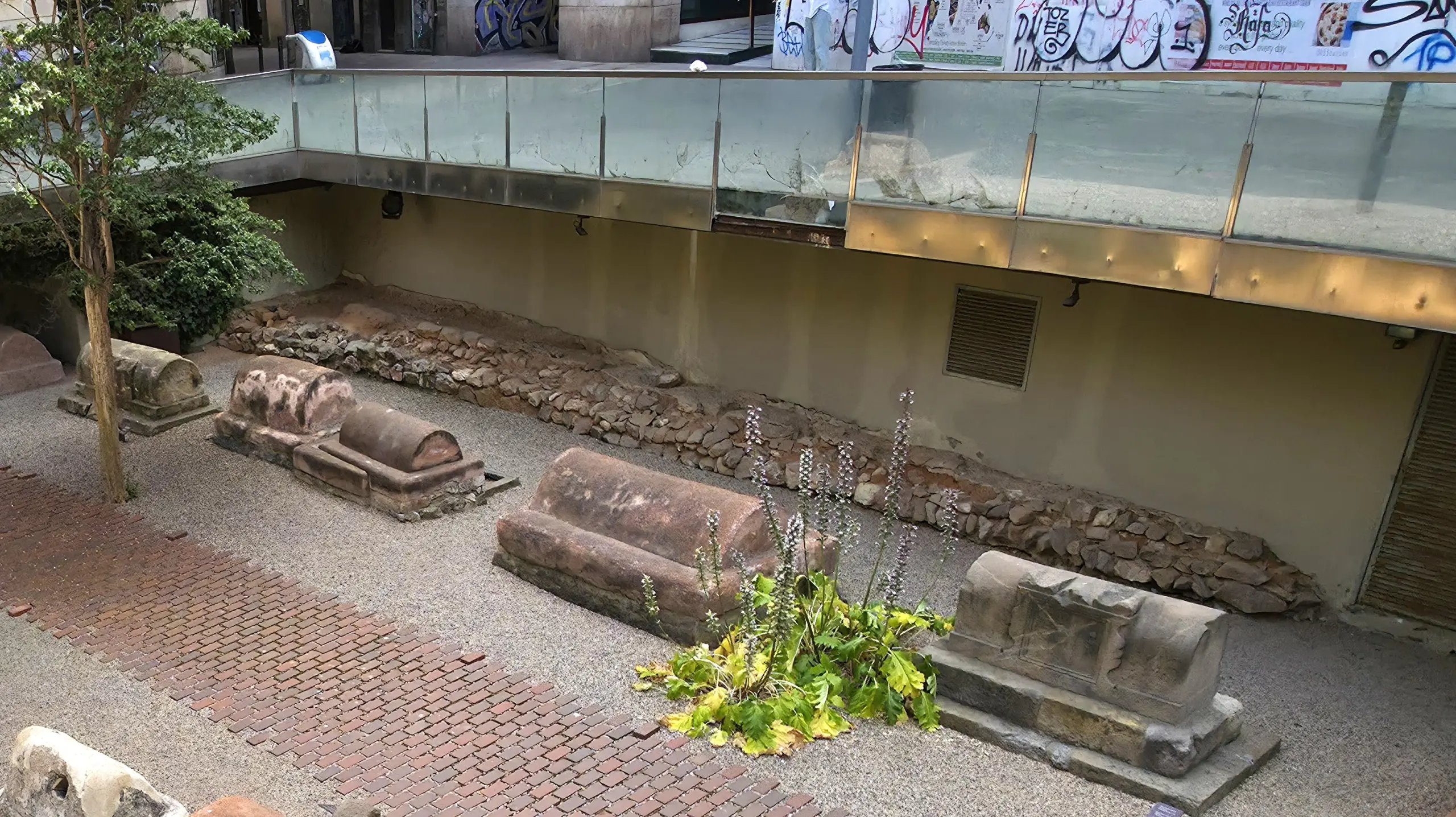
A Square of Contrasts
What struck me most is the contrast. The Via Sepulcral Romana sits in a small open-air park framed by modern apartment buildings and boutique shops. Children play nearby, people sip coffee at outdoor terraces, and just a few meters away, you can hear the bustle of Barcelona’s busy streets. And yet, here in the center, there is quiet. The rows of stone tombs, aligned as they were nearly two millennia ago, bring a sense of stillness. It’s a place that asks you to pause, to imagine the lives of those who once walked these streets, and to realize how deep Barcelona’s roots really go.
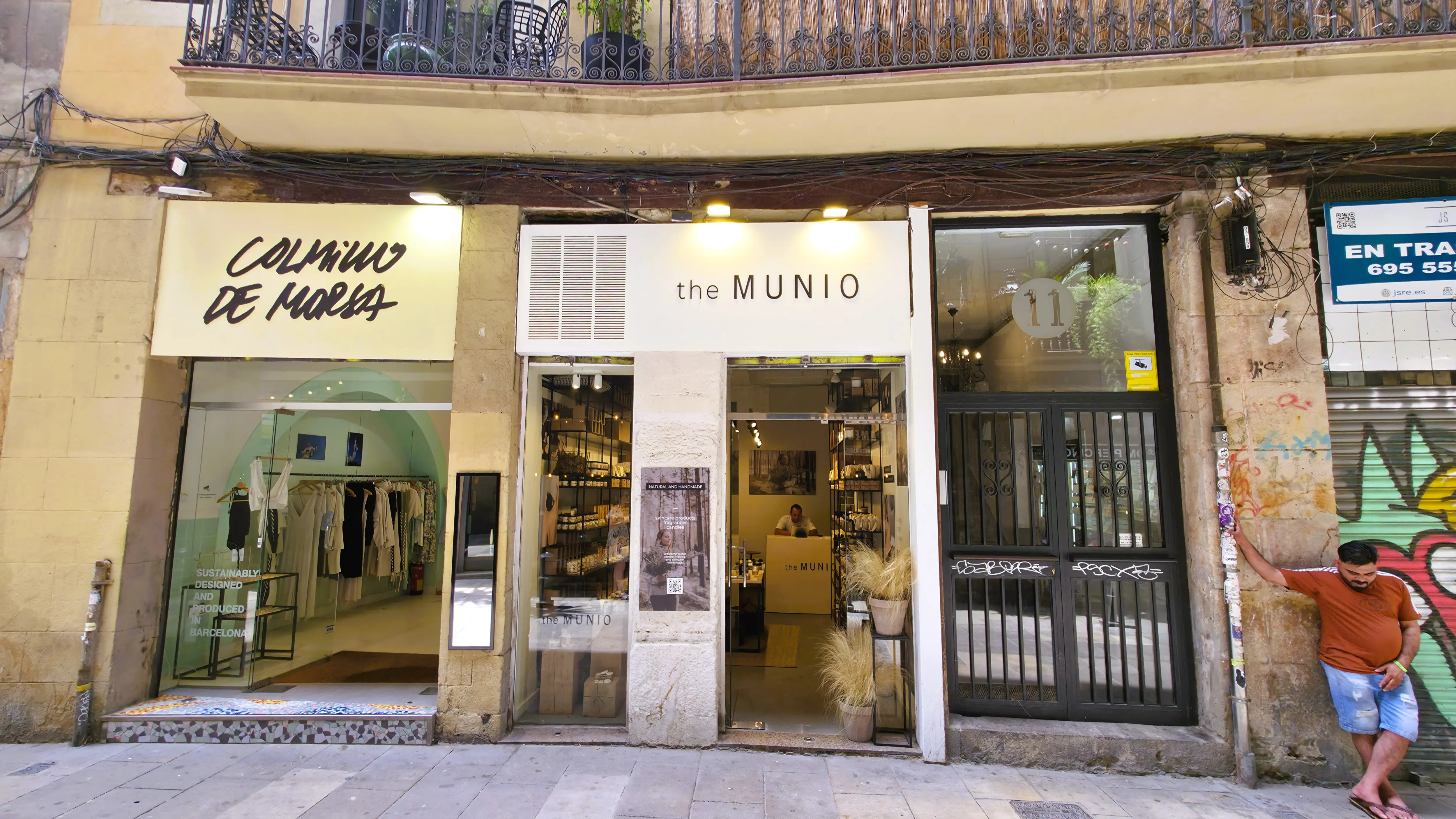
Through My Eyes
Standing at the edge of the necropolis, I felt a mix of awe and humility. The tombs aren’t ornate or overwhelming, they’re simple, human, and intimate. I leaned on the railing, looking down, and imagined families gathering here centuries ago to say goodbye to loved ones, leaving offerings and words that are now lost to time. For me, the Via Sepulcral Romana was a reminder that history isn’t just in palaces or cathedrals, it’s in the quiet corners too, in the traces of everyday lives that echo through centuries.
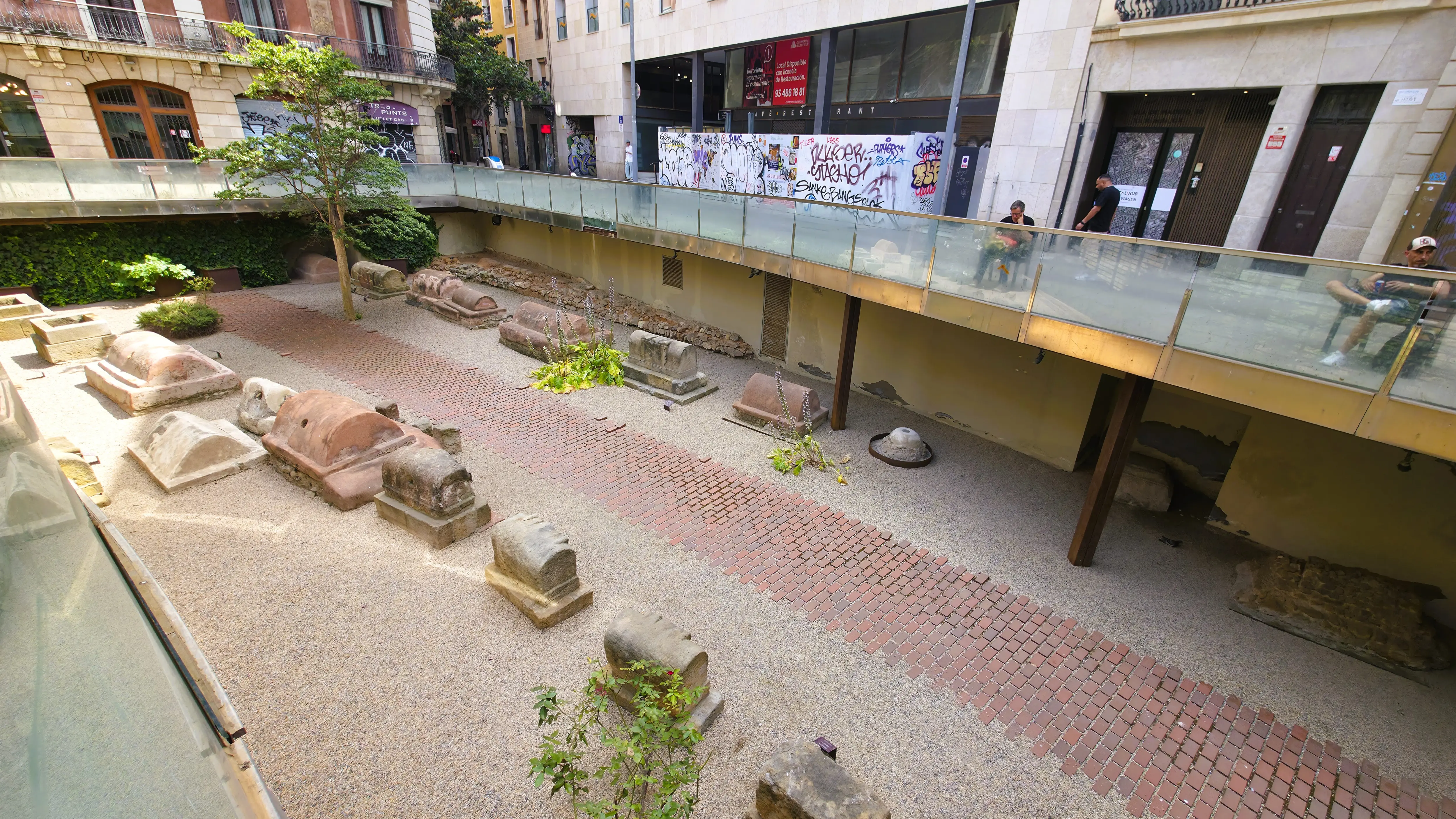
Tips for Visiting
- Location: Plaça de la Vila de Madrid, right in the Gothic Quarter.
- Access: The site is open-air and viewable from the surrounding pathways. There’s also a small interpretation space with additional information.
- Managed By: The necropolis is part of the Museu d’Història de Barcelona (MUHBA) network, which preserves and shares the city’s Roman, medieval, and modern heritage.
- Best Time: Visit in the morning for calm, or late afternoon when the golden light adds warmth to the stone.
- Nearby: Combine it with a stroll to the Barcelona Cathedral, Plaça Nova, and the Roman columns of Barcino for a Roman-themed walk.
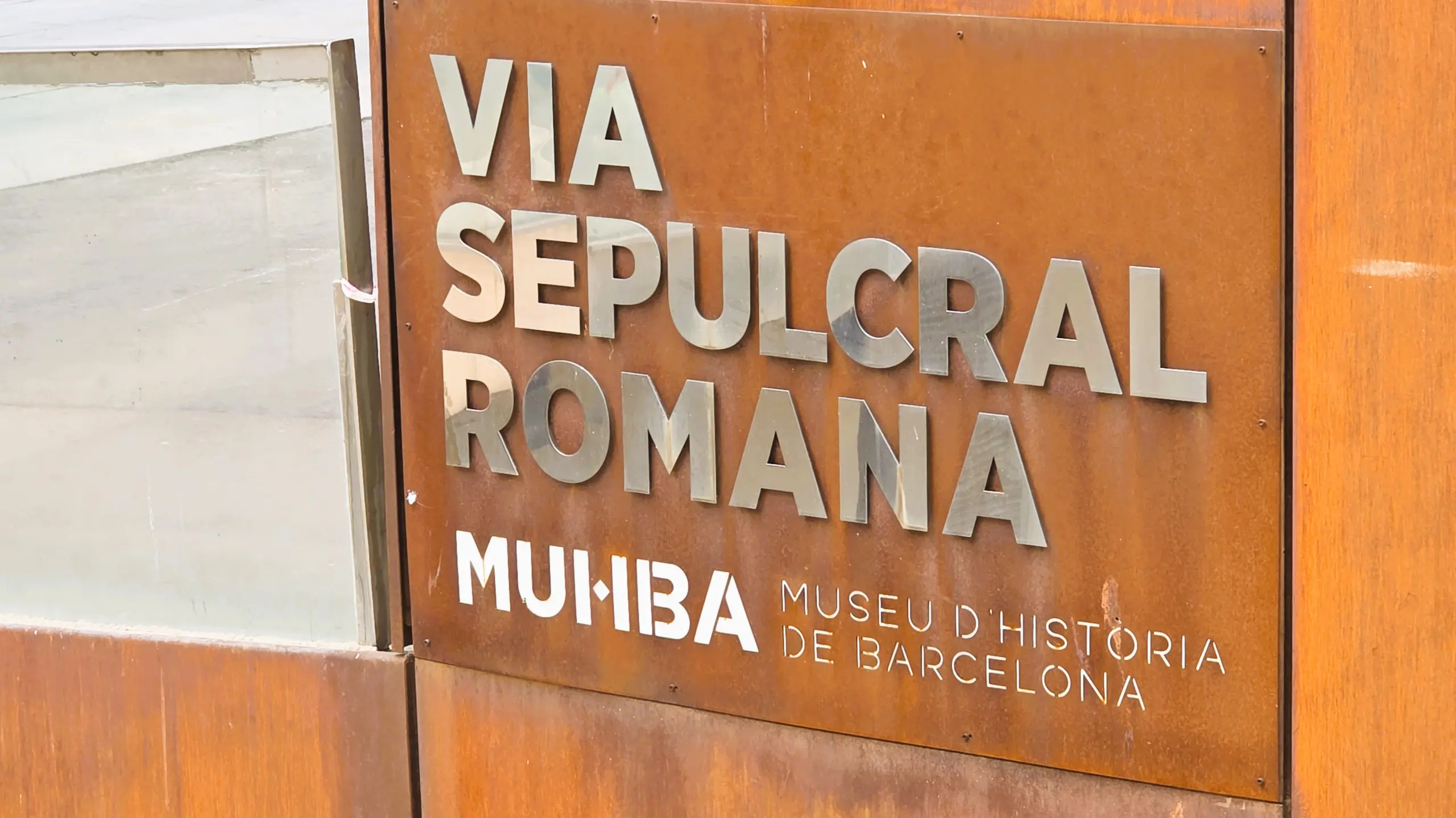
Final Thoughts
The Via Sepulcral Romana may not appear on every tourist itinerary, but that’s what makes it so special. It’s a chance to connect with the lives of ordinary Romans, to step back nearly two thousand years while standing in the heart of a modern city.
As I left the square, I couldn’t stop thinking about the layers of Barcelona: Roman, Gothic, modern – all stacked together, all still alive in their own way. That’s the beauty of this city: you don’t just see history, you feel it under your feet.
So next time you’re wandering the Gothic Quarter, take a detour into Plaça de la Vila de Madrid. Pause by the necropolis, listen to the quiet, and let the whispers of ancient Barcino speak to you.
xoxo,
Bubbly 🎈

